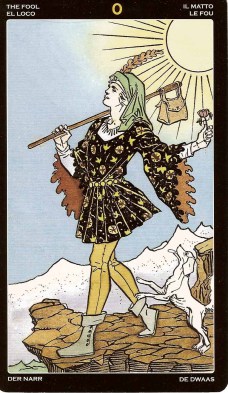Bracha Nechama Bomze’s beautiful debut book, Love Justice (3Ring Press, 2015), is a book-length love poem, a family memoir, and an epic of social change. The title’s multiple meanings are the seeds from which each of the book’s themes branches out and blossoms.
As an imperative, “Love justice” recalls the Hebrew prophet Micah’s summation of God’s will: do justice, love mercy, and walk humbly with your God. This idea is reflected in the history of Bomze’s and her partner Carol’s Jewish immigrant families. Their ancestors bravely escaped Eastern European tyranny and contended with poverty and prejudice in America. The Jewish tradition of labor activism is one of Bomze’s chief points of connection with her heritage. In one of the most powerful passages in the book (read it here), she describes the 1911 Triangle Shirtwaist Factory fire, a notorious industrial accident where 146 young women workers died because the bosses had locked them in to prevent theft. Carol’s grandmother was almost one of them, but had been denied the job because of her reputation for union organizing. Bomze asks, “What if, somehow, Triangle bosses had chosen Sheindl?/Then never could I have chosen–you.” All victims of injustice are the poet’s spiritual ancestors, laying a charge on her to treasure life and to work towards tikkun olam, the healing of the world.
This leads into the second meaning of “Love-justice”, namely the right to love as we choose. Woven throughout the narrative are sensual, joyful love poems to her life partner. If one of the book’s story arcs is a journey of loss–the deaths of their parents, the historical shadows of the Holocaust and September 11–the other arc culminates in Bracha and Carol’s marriage in Provincetown in 2008. It’s hard to choose just one section to quote, but I especially relished the imagery here:
1983:
In the hot July of your persistent seduction
after our race across Boiberik Lake, which I win,
in your moist purple swimsuit you entice me to a macramé hammock
split in a way that flips me toward you.
To avoid falling through the tear in the weave
I reach my twenty-six-year-old thigh through the opening, my tanned foot swings us
gently swings us
toward one another
My nostrils press into sweet perspiration, silken nape hairs enticing as cherry blossoms,
enticing as peach rose petals, mimosa, freshly-juiced guava.
I imbibe flowing drafts from your satiny-wet neck: I do not drown.
Day after night after month after year I drink from the glossy garden
blooming at the top of your spine.
You humor me, joke that I’m obsessed, you have no idea why, until when
one day, we hike a rainforest trail–bromeliads, wild orchids, fronds shaking with monkeys.A hummingbird, in shimmering iridescence,
insistently follows you down the leaf-strewn path
dipping its thirsty proboscis again and again and again, wanting the nectar of your nape.
The vibrations of its eager buzz tickle your skin
until, confused, frustrated, the opalescent jewel speeds away to a flower it can sip.Bliss after bliss after bliss
The third significant meaning of “Love-justice” relates to a topic close to my heart, adoption. Bomze relates a heartbreaking story about her young birthmother, forced to relinquish her child because of social stigma in the 1950s, and the “closed adoption” system that prevented mother and child from discovering any identifying information about each other. In her 40s, the poet finds out her birthmother’s identity and story, but is never able to speak to her directly because the other woman can’t bear to open up those old wounds. On top of that, her adoptive mother couldn’t give her the love or the answers that she desperately needed. (In the excerpt below, Zadie is Yiddish for grandfather, and yahrtzheit is the anniversary of the person’s death.)
I remember, terrified, in the way,
waiting for death but not knowing it,
struggling to comprehend Daddy’s kind but much edited explanation
of Grandma Leah Blima’s agony
incomplete, mystifying, yet whoppingly clear.
I’m just a little girl
a perplexed, questioning, mortified adoptee
from the shaming 1950’s system of locked secrets–
My mother,
caregiver and only child to hospital years, hospice months
My mother,
a woman of scant patience
and wild temper,
never forgave herself her infertility,
hurled her grief and rage at me,
“substitute” child for the “natural one, never born.”
Female, like herself,
not the male first-born she told me she’d have preferred,
to the girl child she never could quite scrub clean–
even in a way-too-hot bath
even if she had to use her nails…Decades later, a stooped woman, still an admired holiday chef
she blurts out, weeping to me in her Rosh Hashanah kitchen,
between wooden-spoon stirs of chicken soup with garlic and dill,
she shrieks and shakes, determined to rip open another secret:
Someone in the family…somene
violated her body when she was a girl…
“It was…it was…No, no, never mind!”I stopped lighting candles on her Zadie’s yahrtzheit.
Through all these personal and political traumas, the poet continues to praise the natural world that feeds her soul, and the life partnership that comes as a fairy-tale happy ending to a lonely childhood. This book inspired and delighted me, and I hope it will do the same for many other readers.







